What Is a Chinese Cleaver?
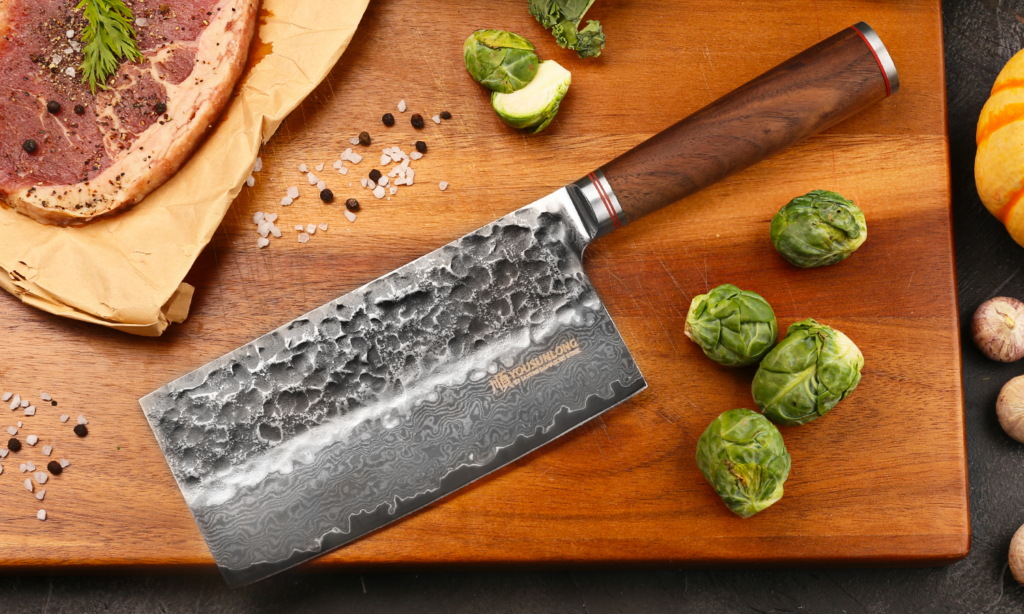
A Chinese cleaver, also known as a Chinese chef’s knife or “chuka bocho,” is a versatile kitchen tool that is essential in Chinese cuisine. It features a rectangular blade that is broader and heavier than a Western-style chef’s knife, typically ranging from 6 to 8 inches in length. The blade is often made from high-carbon stainless steel or traditional carbon steel, providing durability and sharpness. The cutting edge is usually straight or slightly curved, sharpened at a narrow angle for precision
Different Types of Chinese Cleavers
Chinese cleavers come in various types, each designed for specific tasks in the kitchen. The two main types are the vegetable cleaver (cai dao) and the meat cleaver (bone cleaver).
1. Vegetable Cleaver (Cai Dao)
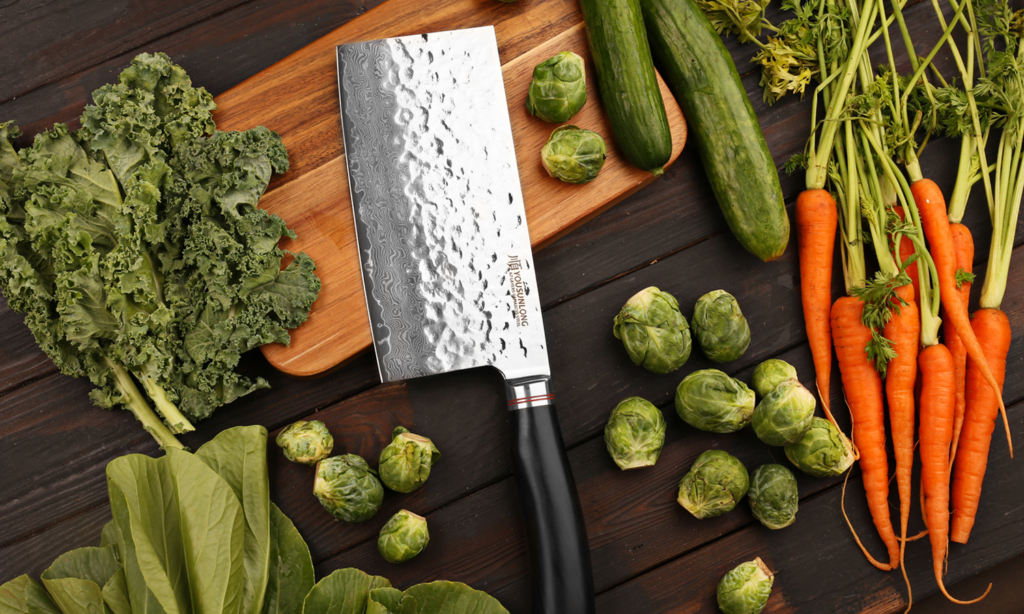
The vegetable cleaver, also known as the “cai dao,” is designed primarily for slicing, dicing, and chopping vegetables and boneless meats. Here are its characteristics:
- Blade Thickness and Weight: The blade is typically thinner and lighter than a meat cleaver, making it easier to handle precise cuts.
- Blade Width and Length: It usually has a wide blade that ranges from 6 to 8 inches in length.
- Sharpness: The edge is sharpened to a finer angle, allowing for clean, precise cuts.
- Uses: Ideal for chopping vegetables, herbs, and fruits. It can also be used for delicate tasks like slicing garlic and ginger, and for general-purpose kitchen tasks that do not involve bones
2. Meat Cleaver (Bone Cleaver)
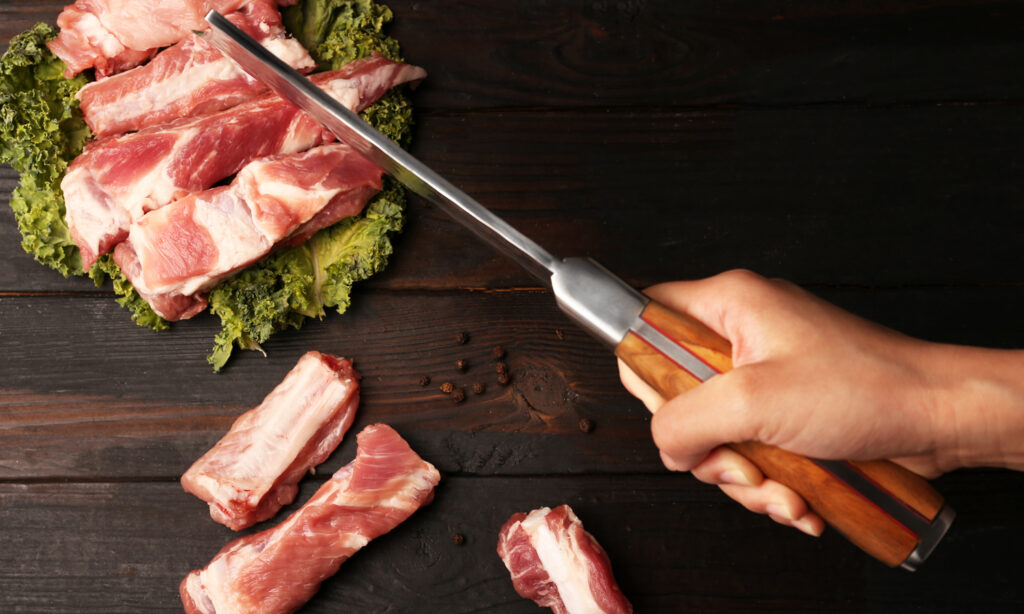
The meat cleaver, or “bone cleaver,” is designed for heavier tasks, such as cutting through bones and tougher materials. Here are its characteristics:
- Blade Thickness and Weight: The blade is thicker and heavier, providing the necessary heft to cut through bones and cartilage.
- Blade Width and Length: It typically has a shorter and more robust blade compared to the vegetable cleaver, but still maintains a rectangular shape.
- Sharpness: The edge is less sharp compared to a vegetable cleaver, as it is designed more for power than precision.
- Uses: Ideal for chopping through bones, cutting meat, and breaking down larger cuts of meat. It can also be used for tasks that require a heavier hand, such as smashing garlic.
3. General-Purpose Cleaver
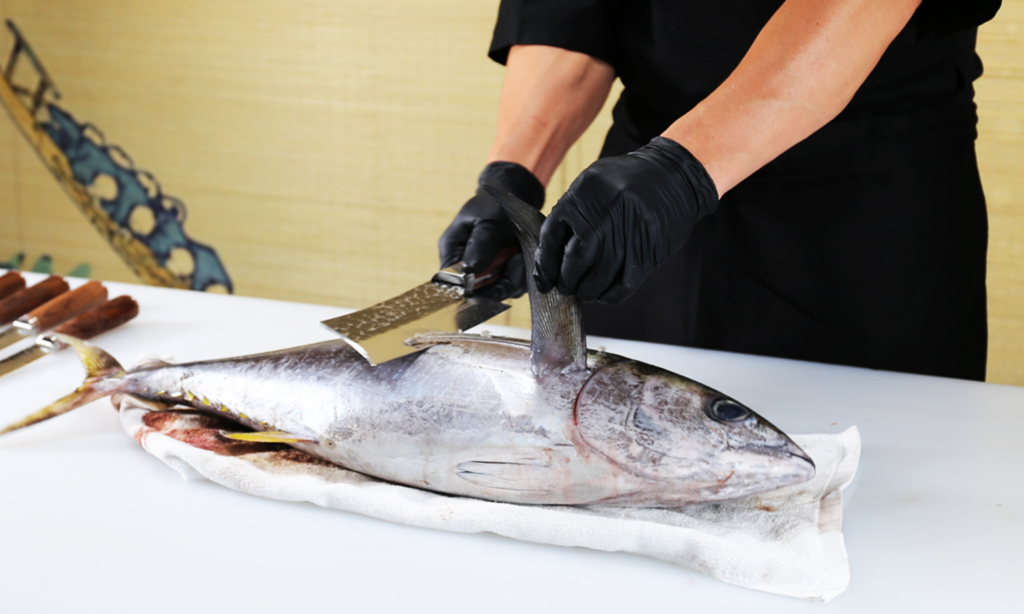
There are also general-purpose cleavers that strike a balance between vegetable and meat cleavers.
- Blade Thickness and Weight: These cleavers have a medium thickness and weight, making them versatile for a variety of tasks.
- Blade Width and Length: They have a standard width and length that can handle most kitchen tasks.
- Sharpness: Moderately sharp, suitable for both slicing and chopping.
- Uses: Ideal for everyday kitchen tasks, including chopping vegetables, slicing meat, and cutting through small bones and cartilage.
These different types of Chinese cleavers offer a range of options to suit various culinary needs, from precise vegetable chopping to heavy-duty bone cutting, making them indispensable tools in both professional and home kitchens.
The Benefits of Owning a Chinese Cleaver
Owning a Chinese cleaver offers numerous benefits, making it a versatile and valuable tool in the kitchen. Here are some of the key advantages:
1. Versatility
A Chinese cleaver can handle a wide range of kitchen tasks. Its broad, flat blade is ideal for chopping, slicing, dicing, and mincing vegetables, fruits, and herbs. It can also be used for cutting meats and, depending on the type, even breaking through small bones.
2. Efficiency
The large, wide blade allows for efficient cutting and chopping. You can easily scoop up and transfer ingredients from the cutting board to the pot or pan, saving time and reducing the need for extra tools.
3. Precision
Despite its size, a Chinese cleaver is capable of delicate tasks. The sharp edge allows for precise cuts, making it suitable for finely slicing garlic, ginger, and other small ingredients.
4. Durability
Chinese cleavers are typically made from high-quality materials such as high-carbon stainless steel or carbon steel. This makes them durable and capable of retaining a sharp edge for a long time with proper maintenance.
5. Multi-Functional Design
The broad blade can be used for more than just cutting. It can serve as a tool for crushing garlic or ginger, tenderizing meat, and even smashing cucumbers. The flat side of the blade can also be used to scoop up ingredients.
How to Choose the Right Chinese Cleaver?
Choosing the right Chinese cleaver requires consideration of various factors to ensure it suits your specific needs and preferences. Here are some key aspects to guide your decision:
1. Purpose
Determine what you will primarily use the cleaver for:
- Vegetable Cleaver (Cai Dao): Best for chopping vegetables, herbs, and boneless meats. It is lighter and thinner, suitable for precise cuts.
- Meat Cleaver (Bone Cleaver): Ideal for cutting through bones and tougher materials. It is heavier and thicker, designed for power over precision.
- General-Purpose Cleaver: A versatile option that can handle a variety of tasks, from chopping vegetables to cutting through small bones.
2. Blade Material
Choose a blade material that suits your needs:
- High-Carbon Stainless Steel: Durable, rust-resistant, and maintains sharpness well. Requires less maintenance than carbon steel.
- Carbon Steel: Very sharp and easy to sharpen, but requires regular maintenance to prevent rust and staining.
- Stainless Steel: Rust-resistant and easy to maintain, but may not hold an edge as long as high-carbon stainless steel.
3. Handle Material
Consider the handle material for comfort and durability:
- Wood: Offers a traditional look and comfortable grip. Requires more maintenance to prevent cracking and drying out.
- Plastic or Composite Materials: Durable, easy to maintain, and often ergonomically designed for comfort.
4. Weight and Balance
Choose a cleaver with the right weight and balance:
- Weight: A heavier cleaver can cut through bones and tough materials more easily but may be tiring to use for extended periods. A lighter cleaver is easier to handle and better for delicate tasks.
- Balance: The cleaver should feel well-balanced in your hand, with a comfortable distribution of weight between the blade and handle.
Recommended YOUSUNLONG Chinese Cleavers
YOUSUNLONG 7-Inch Chinese Vegetable Cleaver
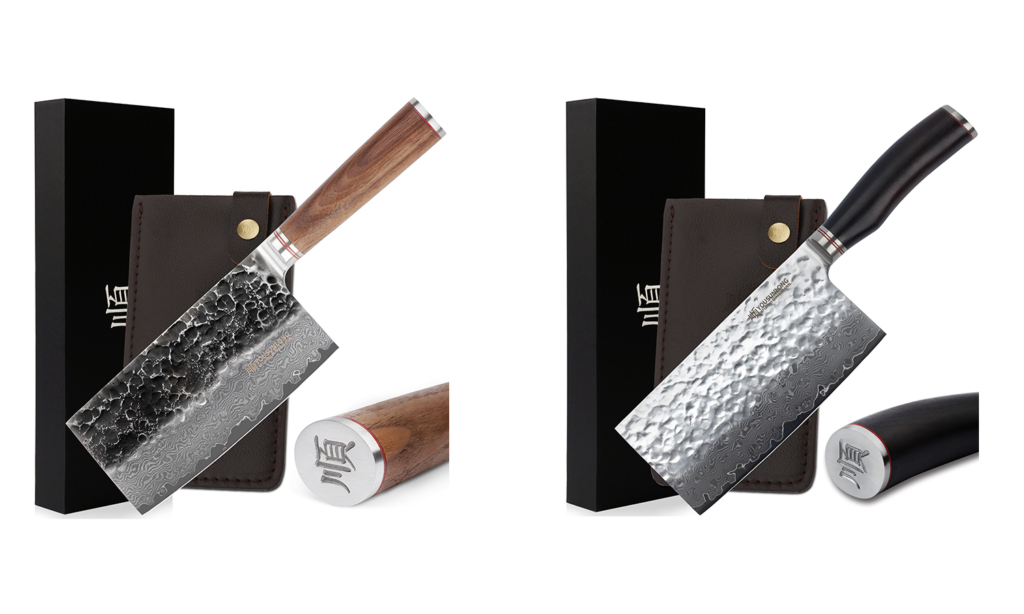
- Features:
Blade Material: Japanese Damascus Steel
Blade Length: 7 Inches
Handle: Natural Wood Handle
Design: Multi-functional, suitable for chopping, slicing, and dicing - Pros:
Durable and sharp blade
Comfortable grip
Aesthetic Damascus pattern
YOUSUNLONG 7-Inch Chinese Bone Cleaver
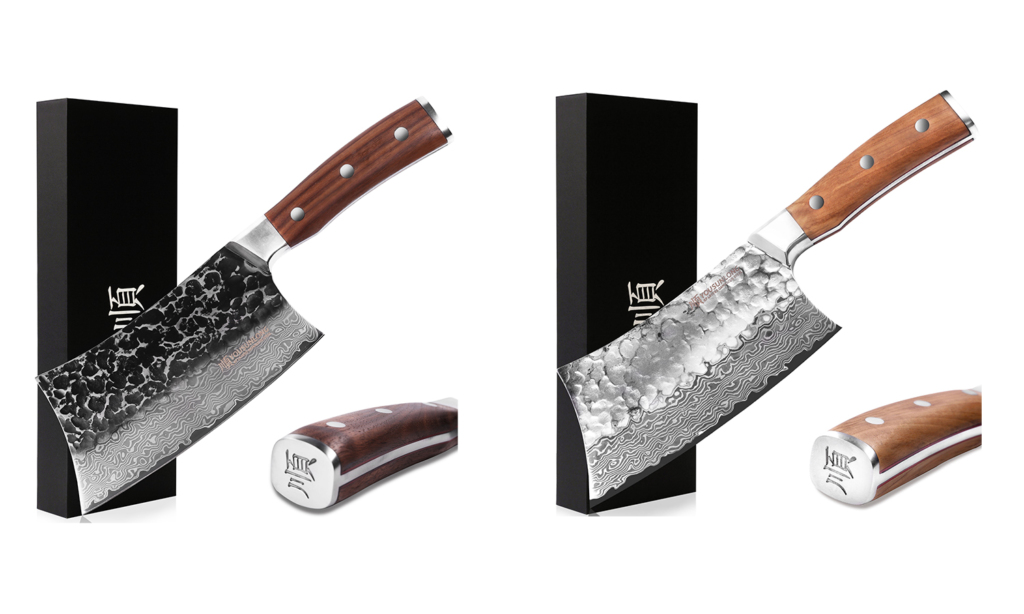
- Features:
Blade Material: Japanese Thickened Damascus Steel
Blade Length: 7 inches
Handle: Natural Wood Handle
Design: Ideal for heavy-duty tasks like chopping bones and hard vegetables - Pros:
Robust and sturdy construction
Excellent for heavy-duty kitchen tasks
Well-balanced